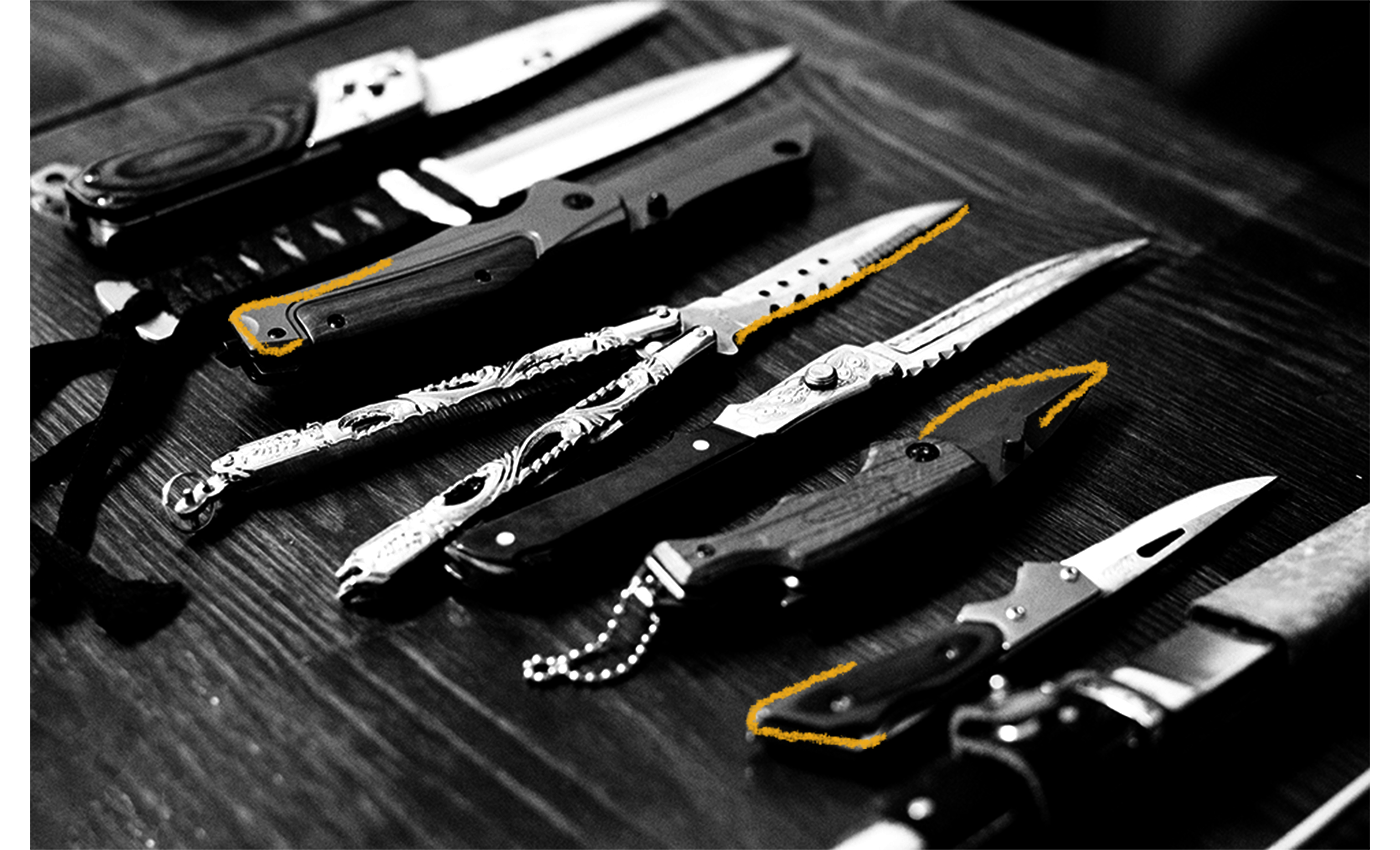The pocket knife’s very basic processor, the jackknife or folding knife, is thought to have originated somewhere in the Germanic regions of Europe between 600 and 500 BCE, although it’s worth noting that evidence of this is difficult to substantiate. The rise of the Roman Empire brought with it many technological advances, and the quality of folding knives improved significantly. Some examples of friction folders (folding knives whose blades are held in place by the grip of the wielder due to extended tangs) date back as far as 43 CE and are made from metals like copper, iron, and steel. Several other cultures also developed their own compact folding knives — for example, the Vikings created their own swiveling friction folders around the 8th to the 11th centuries. During the Medieval Ages, these types of folding knives (also known as penny, peasant, or farmer knives) were popular tools amongst craftsmen and in agrarian communities. The slipjoint (a mechanism that uses spring tension to keep a pocket knife blade extended) was invented sometime around the mid-1600s in England and revolutionized the pocket knife — in fact, it is still widely used in their manufacture today. Slipjoint knives became so popular among scholars and authors (who used them to thin and point their quills) that they became known as "penknives." Unfortunately, due to their ability to be easily concealed, they also became a favorite among bandits. In the 1800s, several knife manufacturers emerged and each made valuable contributions to the pocket knife’s storied history. For example, the American knifemaker Camillus created a folding knife/spook for the Red Cross during WWI and in 1947, they created a full line of official folding knives for the Boy Scouts of America. There have also been a number of culturally distinct design developments in pocket knife history, as evidenced by the Japanese Higonokami, the French Douk-Douk, and the Italian Stiletto. Mechanical and material advancements made in the modern era have further improved the humble pocket knife, which today remains a relied-upon tool for many people, including artisans, builders, engineers, soldiers, and more.

Your go-to guide for weird history facts
Subscribe to the FREE daily email that makes learning about history fun.


